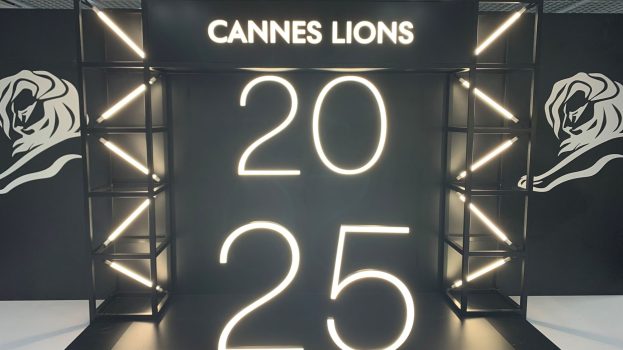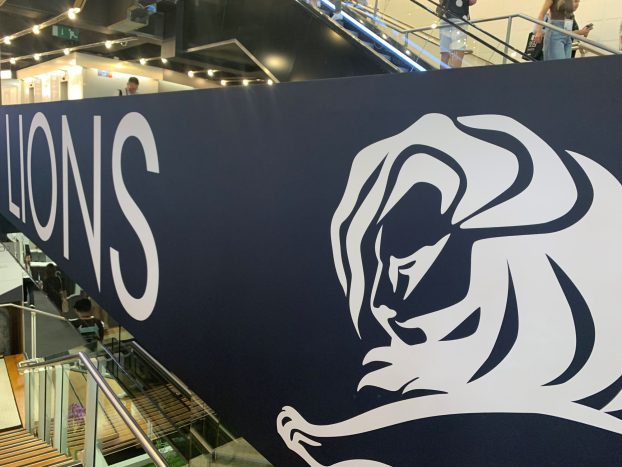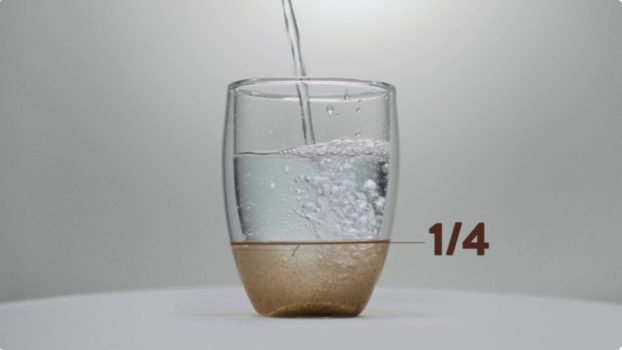Canada may still be hockey country, but basketball – which was, after all, invented by a Canadian in 1891 – is starting to muscle in on its territory. Playing basketball, which can be done almost anywhere and requires little in the way of equipment, has become increasingly popular among young people – to the point that it is now the number one sport played between the ages of 12 and 24 in Canada.
Interest in the professional games of the New York, NY-based National Basketball Association has been growing in Canada as well. Attendance at games hosted by the Toronto Raptors, the NBA’s only Canadian team, increased by 6% during the 2007-08 season over 2006-07, pushing capacity at the Air Canada Centre to an impressive 98%.
Perhaps more importantly, Canadian television viewership for the 2007-08 NBA season – the games are broadcast on CBC, TSN, Rogers Sportsnet, The Score, Raptors TV and Sun TV – was up 32% over the previous season, and Canadian traffic to the official NBA.com website was up 28%. In June, more than 1.8 million Canadians visited NBA.com, representing a 40% increase over June 2007, and page views in the same period were up 25%.
Part of the reason for that is the relative success of the Raptors, who made the NBA playoffs for the second season in a row, and feature considerable star power in the form of captain Chris Bosh (and new addition Jermaine O’Neal). And it doesn’t hurt that one of the league’s best players, two-time MVP Steve Nash of the Phoenix Suns, is Canadian.
But basketball’s popularity goes deeper than that. Its close association with hip-hop and urban street culture – from basketball-themed tracks by Kurtis Blow, Public Enemy and Jay-Z, who’s part-owner of the New Jersey Nets, to the gold chains, baggy shorts and high-performance shoes worn first by athletes, then musicians and then millions – has given basketball an enduring cachet as it’s spread from U.S. inner-city courts to suburban neighbourhoods, fashion runways and concert stages around the world. Players like Shaquille O’Neal, Kobe Bryant and Charles Barkley are on par with movie and rock stars, and the opportunities for marketers are enormous.
Faced with the challenge of building on basketball’s ascent, NBA Canada, the Toronto company that acts as the marketing arm for the NBA in this country, recently named former marketing director Dan MacKenzie as general manager, as well as George Dudas as manager, business development, Leah Brown as manager, licensing and merchandising and Jonathan Chang as manager, marketing partnerships. NBA Canada now has a team of five full-time and two part-time employees – plus another dozen at Maple Leaf Sports & Entertainment (MLSE), the company that owns the Raptors, who work closely with NBA Canada on various initiatives.
In May, NBA Canada signed a deal with Parmalat Canada to develop basketball-themed marketing programs for its cheese products, adding the Toronto-based dairy company to a list of partners that includes Colgate-Palmolive (Speed Stick), Wrigley, Adidas, Nike, Gatorade, Coca-Cola (Sprite), Spalding, Sirius Satellite Radio and EA Sports, which makes video games like NBA Live.
These partners tap the star power of the NBA to court the sport’s primary demo of young males via events like the NBA 3on3 tour, a cross-country basketball tournament, and NBA Cares, a program in which consumers buy partner products at Wal-Mart stores, register online to turn points into charitable donations and receive prizes like NBA notebooks, mini-hoop sets and Raptors watches.
And it works well for them: a recent study by Norwalk, CT-based Sponsorship Research International showed that NBA marks and logos provide a 30% boost in a brand’s ability to grab the attention of potential consumers.
As well, events like the Raptors’ exhibition game against the Denver Nuggets in Edmonton next month help the league reach out to consumers beyond the team’s Toronto base.
At press time, mobile and broadcast deals for the upcoming season had yet to be announced, but the NBA Canada is set on expanding its offerings. Currently, Bell Mobility provides game highlights and contests on mobile phones, and similar content is available on MSN Sympatico, TSN and Rogers Sportsnet portals.
While the overall NBA brand television campaigns originate with the league’s AOR, San Francisco-based Goodby, Silverstein & Partners, NBA Canada tweaks the ads to appeal to various groups, including kids, women and Raptors fans, as well as develop its own spots and geo-target the NBA.com website for Canadian visitors and advertisers. For localized events and promotions, it works with its partners’ AORs as well as agencies like Toronto’s Match Marketing (on the 3on3 initiative), the Toronto-based Armstrong Partnership (on the NBA Cares tour) and Hamilton-based GoBee Industries (for instore promotions with Wal-Mart).
With excitement building for the 2008-09 season, which kicks off next month, we went courtside with Dan MacKenzie to find out what his plans are for world, or at least national, domination.
Why do you think Canadian interest in the NBA is growing?
Dan MacKenzie: It’s a combination of things. The Raptors are an important driver for us, and if they were to end up in the NBA finals, that would have a huge impact on our business. But a big part of our growth has been through an expanding fan base for basketball in general. Compared to other sports, we have a really young, diverse, growing fan base. We have research that predicts basketball’s going to be the fastest-growing sport in the next 10 years in Canada’s biggest urban markets. So I think it’s a combination of interest in the Raptors, interest in marquee players like Steve Nash and LeBron James and Kobe Bryant, who are global stars, and then this year we were fortunate to have an NBA final with two iconic teams, the Lakers and the Celtics.
How will you expand your fan base here?
A lot of it is making sure we have the right TV deals in place. And since our fan base is younger than that of other sports, it’s especially important to have a strong online offering. It’s about having digital assets in place so fans are able to watch the highlights from last night’s game on their phones or forward them to their friends, and making sure there are programs available so our partners can access our fans and talk to them.
We also have programs based around retail. The NBA Cares tour gives partners an opportunity to interact with Canada’s biggest retailer and raise money for charity. It’s an integrated program that actually came out of discussions with our partners about the types of initiatives they wanted. We try to work with our partners and develop unique programs for them, and NBA Cares is one. This year we were in 40 Wal-Mart stores, where the proceeds from certain products supported the Children’s Miracle Network. We took the Larry O’Brien Trophy, the NBA championship trophy, to the stores and supplemented that with player appearances.
What is the 3on3 tour?
3on3 is in its 12th year, and it goes to eight markets – Toronto, London, Moncton, Vancouver, Edmonton, Calgary, Winnipeg and Montreal – and gives the core demo of 13- to 24-year-olds a chance, especially in markets outside of Toronto, to experience the NBA, meet players and play with their friends against good competition. It’s geared to people who play rather than just watch the game, and many of our partners activate their sponsorships around the tournament.
How does NBA Canada work with the Toronto Raptors?
We’re part of NBA International, but we’re the only international market that has a team, which creates some unique opportunities. We work really closely with the Raptors and MLSE on sponsorships, television, events and the growth of the game in general. We’re separate entities, but very closely aligned.
What new initiatives are planned for the 2008-09 season?
We’ll announce a couple of new marketing partnerships, including a Canadian-specific fantasy game, and new television deals. Last year there were NBA games on five networks, and that will be reduced. The other exciting thing is the Raptors’ exhibition game in Edmonton, which will be a great opportunity for fans out West to get up close with some of the best players in the league.
How do you adapt U.S. campaigns for the Canadian market?
Last year we embarked on a new overall brand campaign called ‘Where Amazing Happens.’ That came out of research based around our game, and adjectives like ‘fun’ and ‘charismatic’ and ‘energetic’ came through as being core brand attributes. It came from our agency in the U.S., but we picked up on the theme and did a Canadian-specific spot around it.
One great thing about ‘Where Amazing Happens’ is the ability to keep ‘Where’ and ‘Happens’ and change ‘Amazing’ to whatever makes sense. So the Raptors did a regional theme with taglines like ‘Where Sellouts Happen,’ ‘Where Caring for your Community Happens,’ ‘Where Elevation Happens.’ And we did a spot that was a bit broader with ‘Where National Heroes Happen,’ only it was spelled ‘Nashional’ for Steve Nash.
What about ‘There Can Only Be One’?
That was another U.S.-originated execution where the faces of two of the top players on each of the playoff teams were combined. There were TV spots where they were talking about why they wanted to win, based around themes of competition and fear and excellence and legacy, and it included one with Chris Bosh and Dwight Howard [of playoff rival the Orlando Magic] for the Raptors’ market. And it got picked up. The cover of Time magazine in May was Hillary Clinton and Barack Obama’s faces, and it said, ‘There Can Only Be One.’ And Saturday Night Live did some spoofs of it. It was really interesting creative.
These campaigns gave us the flexibility, depending on what market we were in and what we were trying to communicate, to create a really targeted message.
What is your core demo?
It depends on what partners and what area of the business you’re talking about. From a TV perspective, the MLSE media sales guys sell against 25 to 54, 18 to 34, 25 to 54. If you’re talking about sponsorship for NBA 3on3, it is young, teen-oriented. But when you look at the areas where we’re trying to grow, we’re starting to look at kids as an opportunity. Our deal with Parmalat is very kid-focused, and we’re looking at that as an opportunity to bring in different partners.
Teens are a core strength, and then young adults, which we define as 18 to 29. Speed Stick would be heavily targeted at that group, as well as Adidas, one of our apparel partners.
How are you reaching out to other fans, like women?
Our retail strategy is where you’ve seen that push in the past. We’ve been working globally with Adidas on women’s fan gear.
We used to have a line of clothing in Canada called NBA4her, and there are still remnants of that in the marketplace. The Raptors have a very strong female fan base, so that’s an opportunity for us.
Diversity and youth are the two areas where we really focus our efforts. The face of the Canadian fan is changing, and some of the best players in our league are not from the U.S. or Canada – like Yao Ming from China, Dirk Nowitzki from Germany, Jose Calderon from Spain, Manu Ginobili from Argentina. That gives fans the opportunity to link to someone like them, and we try to integrate that into the spots we do and the imagery we push our partners to use. An NBA deal gives you the ability to use images, player footage and photos. So if a partner is targeting a regional retail program in the West, for instance, we can pick the players that get integrated into that.
How important is the NBA.com website?
For a brand that’s really focused on youth and diversity, it needs to be a core part of our strategy. The first part is making sure we have the best information and that it’s easily navigable. Secondly, we have to have properties that make it a destination for people to come to, outside of just the core scores and standings. Video is a big part of it, as well as things like fantasy games and promotions, the chance to win things and get all-access membership.
Our site in Canada is geo-targeted so it looks very much like NBA.com in the U.S., but we have the ability to tailor it to Canadian fans. That can mean specific content that’s relevant to Canadians, like a heavier focus on the Raptors and the Canadians in the NBA, promotions where you can win a trip to the All-Star game or the finals or information on our Canadian broadcasters. And from a revenue perspective, it also allows us to geo-target the advertising.
How does the NBA’s partnership with Sprite work?
Sprite is a teen-focused brand, and they build their association with the NBA around youth and individuality. The part of our game that links best with that is dunking, so their platform is based around owning the dunk.
This year at the NBA All-Star Game in New Orleans, for the first time fans had the opportunity to choose who became the NBA Slam Dunk champion. When it got down to two dunkers, the fans voted online and through text messaging for the champion. Sprite was wrapped around that entire program, and it was very successful in terms of Canadians who voted online.
Sprite’s challenge to us then became, ‘How can that be extended into the playoffs?’ So we developed the Sprite Slam Dunk of the Year. Every night in the playoffs there was a different matchup, and fans got to vote on who was better. And it ended up being a dunk by Jamario Moon of the Raptors that won it. Now we’re talking to Sprite about how we can continue to build on that.
How important is video game advertising?
EA Sports is one of our biggest licensees, and when you talk about being able to interact with youth, that’s a core part of the business. The thing with the gaming companies is that their marketing is around the launch of games. In the past the lead time for the development of the games was so great that you had to be in early. But now, with the rise of online gaming, there’s more opportunity.
We’ve done a deal where the Massive network sells access to our games and we direct partners that way if they have interest in advertising through things like NBA Live. We have not had Canada-specific partners use in-game advertising yet. But it’s easier to do that with online gaming, and online gaming is growing, so we’ll take advantage of that.
Is mobile becoming more important in your marketing plans?
At this point we look at it as just another screen where fans can consume our game and follow their team. So from a marketing perspective we’re not really taking full advantage of it.
But as a league that’s very relevant to young fans, we need to be progressive in the area of technology. And we are. Whether it’s through our website or doing deals with carriers or portals, it’s a matter of getting our content out there beyond just the core NBA.com and NBA broadcasts. Last year we did a deal with Bell Sympatico, and now we’re in discussions with all the carriers. Because fans are so mobile, if they can catch highlights on their phones, they will. And as more handsets get enabled, that’s where the future is.























